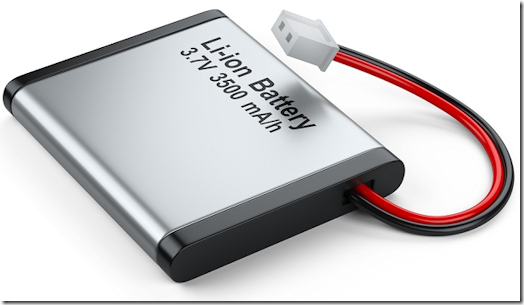Questions people ask search engines to find the blog. And my answers that I use with pupils, along with links to articles I’ve written on the subject previously.
Why is it important to know different terminology?
The full question was ‘why is it important to know different terminology when instructing?’
Everyone is different, with different levels of intelligence, linguistic skills, and so on. Something as simple as referring to a clock face might be a problem for people who have only ever known digital clocks on their smartphones. Or if someone didn’t have a good maths education, referring to an angle or turn in degrees will have them flummoxed. And if you have a degree in English language, using polysyllabic words (that’s one right there) that aren’t used very often on the web will come across as meaningless to many.
It’s always vital to check someone’s understanding, and to find a different way of saying it if they simply don’t get it the first time. One of the best parts of being an instructor – for me, at any rate – is trying to find the right buttons to press and switches to flip that turn on the lights in people’s heads.
Why shouldn’t you use the handbrake in an emergency stop?
The question asked was ‘what are the dangers of using the handbrake in an emergency stop?’
Modern cars have antilock braking systems (ABS). When you hit the brake hard (as in the Emergency Stop), a computer under the bonnet can detect when the wheels lock (i.e. stop turning) – if the car is still moving when this happens, it will skid. So the ABS automatically releases the brakes then grips again repeatedly until the car stops moving. This brake-release cycle is the ABS, and it repeats about 15 times every second. You can usually feel the pedal vibrate when the ABS has kicked in. Basically, ABS stops the wheels from locking (the clue is in the name).
If you are skidding with locked wheels, you have no control over where the car is going. Momentum, gravity, and the road surface make the decision for you. But since ABS allows the wheels to move a little, you can still retain some steering control when it kicks in. ABS operates on all four wheels and is hydraulically controlled.
The handbrake does not go through the ABS system, and it typically only acts on the rear wheels. It is also usually a manual system involving a cable. That means that if you pull it hard enough to lock the wheels, only the rear ones are affected and the back of the car skids and spins out. This is extremely dangerous, and can happen even at low speeds if the road surface is slippery.
On modern cars with electronic handbrakes (parking brakes), the system is slightly different. However, the car won’t let you apply the parking brake if you’re moving fast.
The handbrake is only intended to hold the car still when it is stopped, and should not be used for braking to a stop because of the risk of locking the wheels. Even in a modern car, applying the parking brake while the car is still creeping slightly (which it will allow) could be enough to slip into a gate or wall if the surface is, say, icy and on a slight slope.
Also be aware that no brake lights come on when you use the hand/parking brake, so if you brake using it, anyone behind is likely to react late and end up in the back of you.
When should I use the handbrake?
Many modern cars have advanced braking aids, such as ‘hill start assist’ and ‘foot brake assist’. They also have electronic handbrakes which are operated by a switch rather than a lever, and which disengage automatically when you pull away.
I have thought long and hard over the last five years about whether to teach people with these aids turned on (you can usually disable them). Initially, I had them turned off, but now they are becoming so common there is an increasing likelihood that the cars pupils buy once they pass will also have them fitted. So I now use ‘hill start assist’ and ‘foot brake assist’ on my lessons.
The sole purpose of the handbrake (or parking brake, as I now call it, since you don’t use your hand to apply the braking force) is to prevent the car from rolling when it is stopped or parked. Bear in mind that when the hand/parking brake is applied, the brake lights do not illuminate.
When does a signal benefit others?
The actual question was ‘what does it mean to signal only if it will benefit others?’
If you’re turning left or right, or even just changing lanes, my advice to learners is just to check your mirrors and signal, then carry out the manoeuvre if it is safe to do so. However, if there is no one around who is going to see that signal (i.e. to benefit from it), then it is not strictly necessary.
I’ve written about this before, but the upshot is that when turning left or right, in the vast majority of cases at the point where you should apply the signal you cannot possibly know if there is someone who will benefit or not, because they will be approaching from the road you want to turn into – almost always out of your view at that point – and you simply won’t know. That’s why I advise my learners always to signal for turns, and not to try and get smart about it.
The situation is slightly different if you’re just switching lanes, for example. In that case, if you can see that there is no one behind or in front of you who is going to benefit from you signalling your intentions, then you have a good argument for not doing it. The problem is that it’s only a good argument if you are right – and learners are less experienced and more likely to get it wrong. Furthermore, if they signal to change lanes on their driving test when it is absolutely not strictly necessary, no fault will be recorded (though that’s not the case on the ADI Part 3 test). But if they don’t signal and the examiner thinks they should have, it could easily be marked as a serious fault.
The same is true when pulling over and stopping, and when moving off again. If there is no one who could possibly benefit from signalling, you don’t need to do it. But the questions you might need to address are: ‘do those pedestrians need to know – even though they’re 100 metres away?’; ‘is there anyone in that van in front of me?’; ‘might someone I can’t see yet be coming the other way as I pull out from behind this parked van?’; and so on.
It can be a tricky call even for an experienced driver. For learners it is trickier still. There is no single answer, as every situation is different, but for learners it is better to play it safe rather than take risks. As long as they have done all the necessary checks, signalling when it isn’t strictly necessary isn’t a problem.
It’s also worth clarifying the original question. No one has said you must only signal if it will benefit others (well, not unless you’re going for the Golden Anorak with RoSPA or IAM). The point is that a signal is only necessary if it will benefit others, and for 99.9% of the driving population it’s better to be safe than sorry.
What do ‘S’ and ‘D’ mean on the driving test report?
On your driving test, there are three categories of fault. A driver fault (often called ‘a minor’), a serious fault (the ‘S’), and a dangerous fault (the ‘D’). You can get up to 15 driver faults and still pass, but get a 16th and you fail. You cannot get any serious or dangerous faults and still pass.
You cannot have all 15 driver faults under the same heading. For example, if you move off without checking properly (your blind spot, let’s say), if no one is around you will probably get a driver fault for it. If you do it again (and no one is around), you may still get away with it – if you’re lucky. But do it three or more times and the examiner is likely to convert it to a serious fault (one examiner once told me he went on ‘5 strikes and you’re out’, but this is not official and you cannot assume all other examiners are as lenient).
That same fault could easily be marked as a serious one the very first time you do it if someone is approaching and you don’t see them. It could be marked as a dangerous fault if the approaching vehicle is so close that there’s a chance of a collision.
Personally, I think that not checking properly should always be at least a serious fault, because if you don’t check properly you wouldn’t know if anyone was there or not, and the only difference between it being seen as a driver fault or a serious on test is that you were lucky that there wasn’t anyone coming.
How long does it take to learn to find the bite?
A recent search term was “how long to learn the bite on a new car?”
It depends on the driver. A typical beginner who has never driven before can easily pick up clutch control in just a few minutes. And over the next few hours will polish that skill as they move on to wider skills. However, it is far from rare to have people who are always going to have issues even after they pass (I can think of quite a few over the years).
As for a new car, my own experience is all I can go on. Before I became an instructor I bought a nearly new car. At the time, I only did a couple of thousand miles a year at most, and when it went for its first MOT after two years the garage told me the clutch was worn and would need ‘replacing soon’. In fact, I drove it for another four years or so, until the clutch started to slip and I had to bite the bullet.
When I went to pick it up, I couldn’t move it without stalling. Over the years, the position of the pedal where you obtained the bite had gradually risen as the clutch wore down, and I’d gotten used to it without realising it. Suddenly, the bite point was right at the bottom of the pedal’s travel – just as it will be in most new cars. My leg had a memory, and this new position came as a big surprise to it, as it tried to go higher and causing a stall. I just about cracked it in the two mile drive home, and a couple of days later, my leg was fully trained.
These days, each time I get a new car I notice no difference.
Why do I keep stalling my petrol car?
I get a lot of visitors asking this, or something very similar.
Quite simply, unless there is a definite fault with the car (which is unlikely), you are not putting enough gas on or you are lifting the clutch too quickly. It can easily be a combination of both of these, with the first making the second worse, and so virtually guaranteeing a stall.
The problem often stems from the fact that you were taught to drive in a diesel car. Most diesel engines are much more difficult to stall than petrol ones – it’s to do with the torque. It is possible that in order to teach you quickly, your instructor didn’t teach you to apply gas until you were moving. This would have been fine in their car, but as you have discovered, all they did was teach you to drive their car – and not the one you’ve now bought.
The lower risk of stalling a diesel engine would also have masked any clumsiness you may have demonstrated in finding the biting point. If you came up a bit fast or a bit too far, the diesel would take it, but a petrol car just stalls immediately if you do it the same way.
With my own pupils, I teach them firstly to find the bite smoothly and gently on a hill using no gas (and I do that in both diesel and petrol cars). If they can move and then hold the car still without braking or stalling, they will know the sort of pedal control they should be using. Then we learn to do the same by setting gas first, then moving it and holding it as before. Finally, we move on to accelerating away up the hill smoothly. Most pick it up quickly, but some take a few practice sessions to master it. In most cases, once we’ve done the exercises, we put it into practice at traffic lights and junctions, and that provides the fine tuning.
Bear in mind that if you have bought an older car, or one which hasn’t been serviced recently, it may be much more sensitive to stalling. Just remember: you need to put some gas on, and move off smoothly.
Why do my wipers smear?
Someone found the blog on ‘wipers smear after car wash’. I get a lot of hits on this.
Quite simply, it’s because you’ve got oil, wax, or something else on the glass or wiper blades. It only takes a little on either of them, and it gets spread everywhere. New cars often have a film of some sort on the glass, and this causes the same problems. None of it is that easy to get off, though there is a way.
In short, you need to get hold of some traffic film remover (TFR). You can get it from many outlets, including Amazon.
The car wash is notorious for putting it on because many use a shampoo with wax in it already. Or they put some water repellent on, which has a similar effect. Make sure you clean your wiper blades, and the space at the bottom of the windscreen where the wipers sit when not in use, otherwise it just smears back on when you use them.
What is the stopping distance in a tunnel?
It’s the same as anywhere else. People get confused by Highway Code Rule 126, which says you should leave at least a 5 metre gap between you and the car in front if you have to stop. It’s to allow free movement for people who may have to evacuate, and for the Emergency Services. It’s a separate issue.
Since visibility in a tunnel is often reduced, and people are more likely to do something stupid, it makes sense to leave greater clearance between you and the car in front while you are moving in case you have to stop suddenly. But stopping in a tunnel is no different to stopping anywhere else.
How far from the kerb when doing parallel park?
People often ask how far is too far from the kerb when parallel parking (or stopping normally).
The examiner isn’t going to get out with a tape measure or anything. In terms of doing it on your lessons, if you’re between not touching it and about a tyre’s width from the kerb – perfect! Two tyre’s widths – pushing your luck, but probably OK to the examiner. Any more than that, absolutely rubbish – and assume the examiner would think so, too.
The same goes for stopping at the side of the road. If you’re more than about two tyre’s widths away, then as far as I am concerned – if you were on a lesson with me – then you’re too far. And the examiner will almost certainly think the same.
Some examiners are extremely lenient and might let it pass even if you were wider than two tyre’s widths away, but don’t count on it. They might also let you get away with doing it once if the other attempts are OK, or if you have driven a really good test but only mess up a little on the parallel park. As I say, don’t count on it.
Some years ago, traffic wardens were out with tape measures in Nottingham and ticketing people who were more than 18″ (about 45cm, which is almost half a metre, and a bloody long way however you look at it) away from the kerb. Just use that as rough guide as to what’s OK and what might not be, because it ties in with what I’ve already said.
 This post was made shortly before the first lockdown at the start of the pandemic.
This post was made shortly before the first lockdown at the start of the pandemic. Houston, we have a problem!
Houston, we have a problem!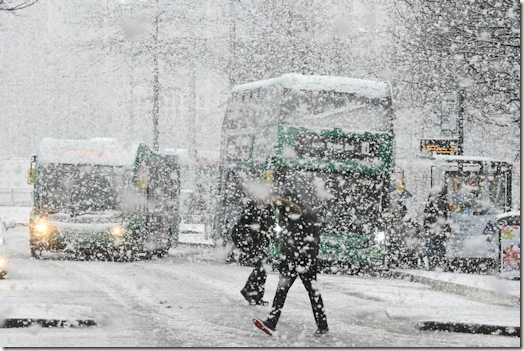 Caution – contains swearing.
Caution – contains swearing.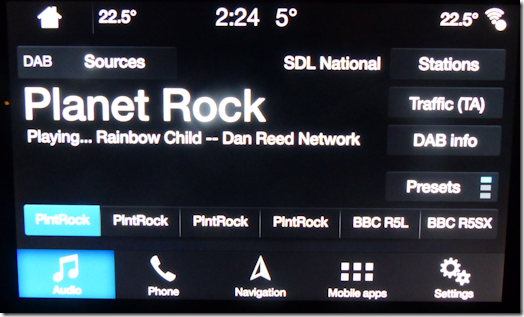 Since I got my new Ford Focus last year (2018), it has suffered from repeated random locking-up of the radio and navigation system. The only way to reset it once it happens has been to either leave the car and lock it for a few minutes, so it resets itself, or press and hold the OFF and Fast Forward buttons for about 8 seconds. Oh, and the radio has never remembered that I have set it to show additional information (the song that is playing, for example), meaning I have to turn that feature on manually every time I get in the car).
Since I got my new Ford Focus last year (2018), it has suffered from repeated random locking-up of the radio and navigation system. The only way to reset it once it happens has been to either leave the car and lock it for a few minutes, so it resets itself, or press and hold the OFF and Fast Forward buttons for about 8 seconds. Oh, and the radio has never remembered that I have set it to show additional information (the song that is playing, for example), meaning I have to turn that feature on manually every time I get in the car). Spare a thought for the people who have to work on Christmas Day – the police, ambulance, and fire service in particular. They don’t really have much choice, but they provide a valuable service that can’t take holidays.
Spare a thought for the people who have to work on Christmas Day – the police, ambulance, and fire service in particular. They don’t really have much choice, but they provide a valuable service that can’t take holidays.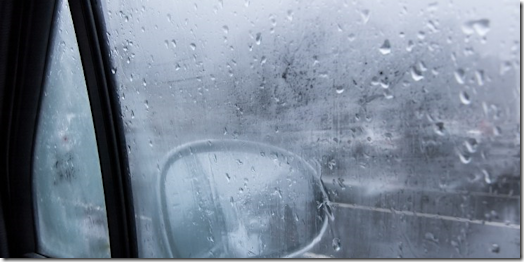 This is an old article from 2013, but it is due an update. When I originally published it, one of the show-me-tell-me questions was:
This is an old article from 2013, but it is due an update. When I originally published it, one of the show-me-tell-me questions was: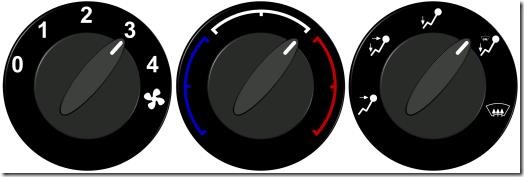

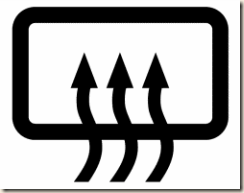 The heated rear window button will have an icon like the one on the left, and the heated front windscreen will have one like that shown to the right.
The heated rear window button will have an icon like the one on the left, and the heated front windscreen will have one like that shown to the right.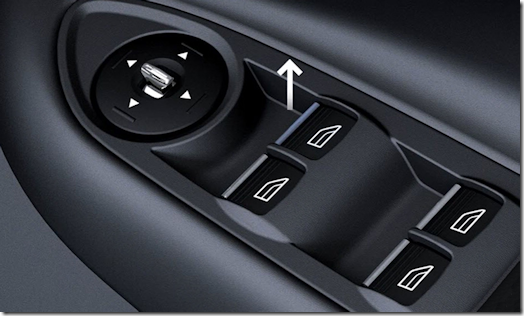 My Focus has one-touch electric windows. On my last car, shortly before it was due for a service, the driver-side window developed a fault whereby when it was closed and hit the top of the frame, it bounced half way back down. What I had to do was carefully inch it up and make sure it didn’t hit the top each night when I got home and locked it up. There was still a small gap, though, but it had a service booked and we had no rain, so it wasn’t an issue.
My Focus has one-touch electric windows. On my last car, shortly before it was due for a service, the driver-side window developed a fault whereby when it was closed and hit the top of the frame, it bounced half way back down. What I had to do was carefully inch it up and make sure it didn’t hit the top each night when I got home and locked it up. There was still a small gap, though, but it had a service booked and we had no rain, so it wasn’t an issue.